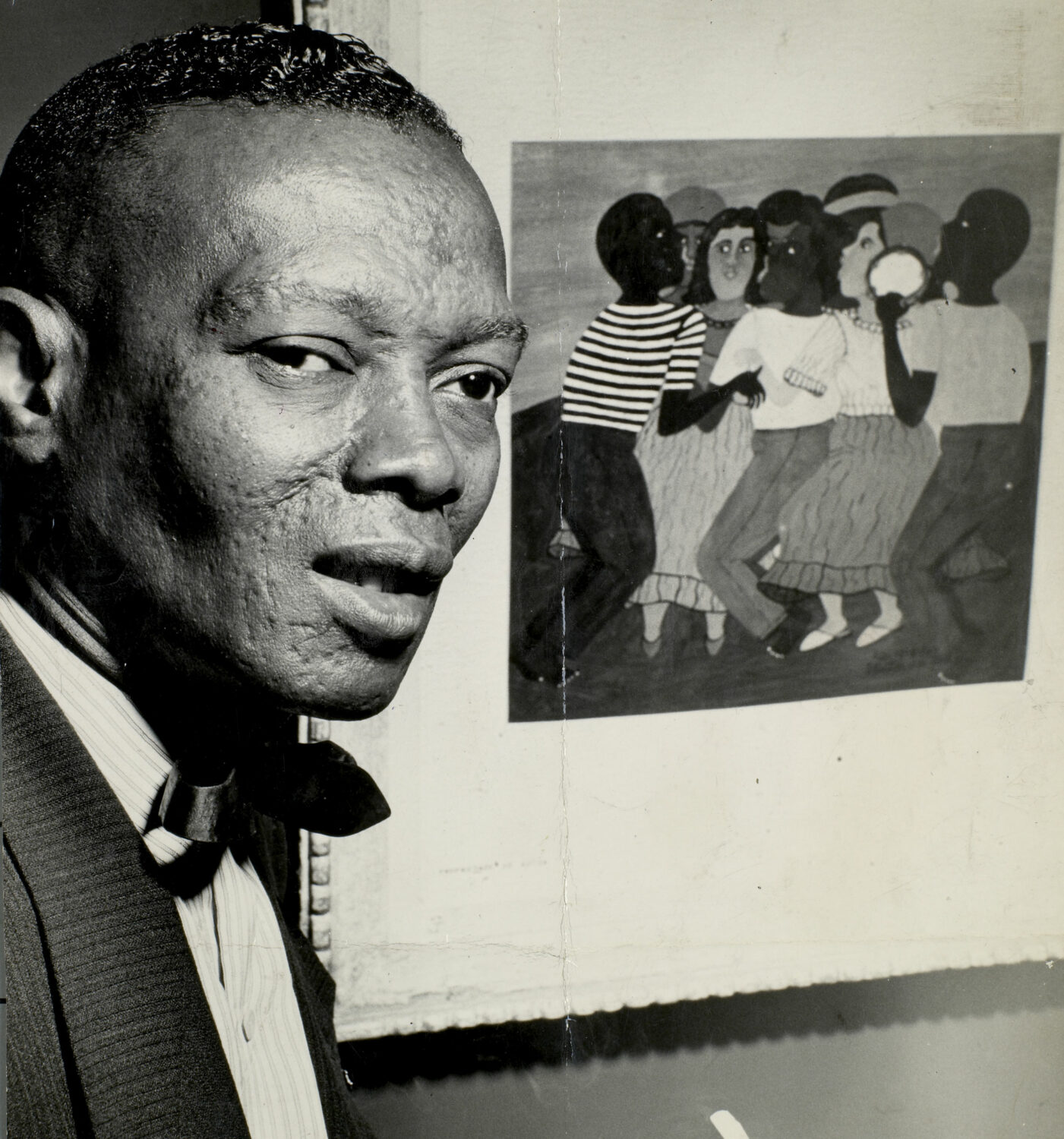Through Samba and Painting, Heitor dos Prazeres Centres Afro-Brazilian Narratives
By Keshav AnandA true multidisciplinarian, Brazilian composer, singer, designer and visual artist Heitor dos Prazeres was born in Rio de Janeiro in 1898. A pioneer of samba — music that originated in the Afro-Brazilian communities of Bahia in the late 19th century and early 20th century, continuing its development through the urban communities of Rio — dos Prazeres was part of the first samba schools of Brazil, innovating sounds now synonymous with the region. Interestingly, today, he is probably better known for his paintings but this chapter in his career came much later in life.
Dos Prazeres was born into a family with a great love for music, and artists and instruments surrounded him through his childhood. His father was a clarinetist in the National Guard band and his uncle, Hilário Jovino Ferreira, was part of the first generation of urban samba musicians. Before his untimely passing, dos Prazeres’ father taught him to play the clarinet in various rhythms like polkas, waltzes, choros and marches, opening his son’s mind to the possibilities of composition. Music was very much the young polymath’s introduction to Rio’s arts scene.

His uncle Hilário gave him his first cavaquinho, a small Portuguese string instrument in the European guitar family, which dos Prazeres swiftly mastered. He started playing in Candomblé religious gatherings in houses where other experienced musicians performed and improvised African born rhythms such as jongo, lundu, cateretê and samba. This educative and energetic period undoubtedly influenced dos Prazeres’ later works on canvas, which often depict lively scenes of religious celebrations and conviviality.
Following a tumultuous adolescence, which included two months in the Correctional Colony Dois Rios on Ilha Grande, in the 1930s, dos Prazeres’ formed the Grupo Carioca and became a rhythm player for Rádio Nacional, as well as regularly performing at Cassino da Urca, a notorious Rio casino that operated in the city while gambling was banned. A prolific composer and singer, his most popular songs include: Cantar para Não Chorar, with Paulo Portela; Carioca Boêmio, Consideração, composed in partnership with Cartola; and Pierrot Apaixonado, with Noel Rosa.
In 1936, the passing of his wife, Dona Gloria, whom he had three daughters with, prompted a major shift in dos Prazeres’ creative output. It was at this moment that he began to focus on the visual arts, particularly painting. His friends, including art critic Carlos Cavalcante, painter Augusto Rodrigues and writer Carlos Drummond de Andrade, fervently encouraged dos Prazeres’ new interests. Alongside painting, he made percussion instruments and designed the costumes, props and backdrops for various live performances.

Dos Prazeres’ paintings explore themes related to Brazilian popular culture, portraying and celebrating the traditions and daily lives of Brazil’s urban Black populations. Reoccurring subjects in his works include depictions of samba musicians and dancers, carnival festivities, and life in the favelas, as well as scenes of the religious traditions he grew up around, such as Candomblé and Umbanda. Graphic yet effectively conveying a visceral sense of depth, his paintings brilliantly articulate charged moments in time.
Individuals he knew and respected inspired some of the reoccurring characters that populate his paintings, hailing from the bustling neighbourhood situated between Cidade Nova and Cais do Porto in Rio, known as “Little Africa.” Self-portraits of the artist appear in a number of his works too. Through nuanced and dynamic representations, with great attention paid to details like garments, jewellery and facial expressions, dos Prazeres works centralised figures often marginalised by wider society in Brazil.

Playing a seminal role in a larger movement, his rich and prolific contribution to the arts helped cement the area’s reputation as one of the world’s most vibrant spaces of Afro-diasporic creativity. A year after his first foray into painting, the artist started to share his work through public exhibitions. In 1951, his good friend Carlos Cavalcante invited dos Prazeres to contribute to the inaugural Biennial of Modern Art of São Paulo, an event which the artist went onto become a staple of, with an entire room dedicated to his work the following year.
Up to the very end of his life, in 1966, when the artist passed away aged 68, dos Prazeres remained extraordinarily active, participating in the First World Festival of Black Arts in Dakar. He also conceived the sets and costumes for the Ballet of the IV Centenary of the City of São Paulo. A powerful voice whose cross-disciplinary practice today remains as relevant as ever, last year, a major exhibition of dos Prazeres’ work was held by the Centro Cultural Banco do Brasil. And in London, his work is included in the upcoming exhibition, Some May Work as Symbols: Art Made in Brazil, 1950s–70s at Raven Row, opening on 29 February 2024.
Feature image: Heitor dos Prazeres, St. John’s Day, 1942. Courtesy Inter-American Fund / Museum of Modern Art, New York